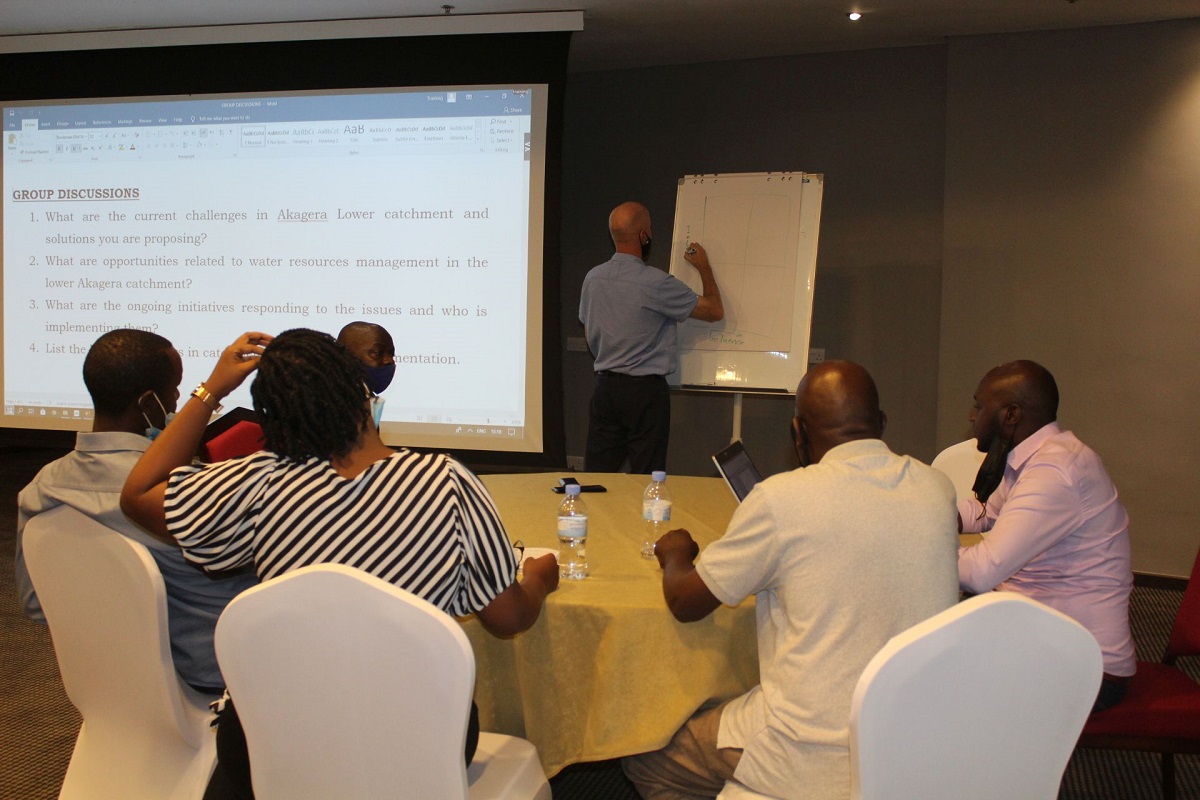How local communities restored degraded sebeya catchment in Rwanda
It is sunrise on Monday morning in Rutsiro District, in the mountainous western edge of Rwanda. A group of men, women and youth are ready to start work carving radical terraces into the steep slopes of the Kajugujugu site of Murunda Sector, Rutsiro District.
In recent years, limited economic opportunities has forced people living in Sebeya catchment to depend on the limited land base for intensive livestock grazing and subsistence agriculture. This has led to continual degradation of the Sebeya catchment. Heavily grazed, deforested and denuded slopes were highly susceptible to surface run-off during heavy rains, carving deep gullies, triggering landslides, downstream flooding resulting in economic damage, and loss of life.
The Embedding Integrated Water Resources Management (EWRM) project is being implemented across 4 administrative districts: Rubavu, Rutsiro, Ngororero and Nyabihu in Western Province of Rwanda using an innovative participatory community approach that not only engages people through casual labour on landscape restoration works but also provides them with opportunities to contribute to the planning of interventions through the Village Land Use Action Planning (VLUAP) processes being led by the EWMR Technical Assistance Consortium led by IUCN.
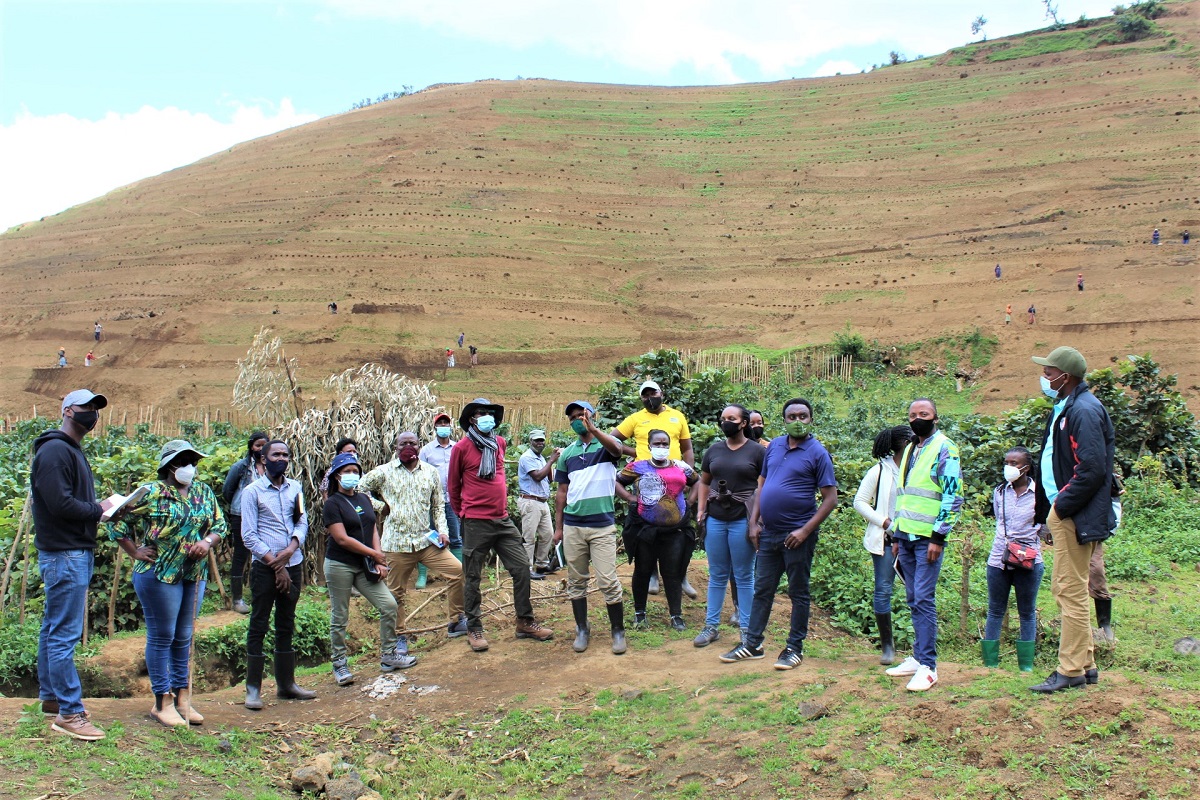 Photo: EWMR project consortium team provided technical assistance during the implementation of the project. Photo/IUCNRwanda
Photo: EWMR project consortium team provided technical assistance during the implementation of the project. Photo/IUCNRwanda
EWMR is funded by the Embassy of the Kingdom of the Netherlands and implemented by the Government of Rwanda through the Rwanda Water Resources Board (RWB) in collaboration with IUCN, Rwanda Rural Rehabilitation Initiative (RWARRI) and Netherlands Development Organization SNV.
The innovative community approach enables community members at village level to identify local problems of landscape degradation and soil erosion caused by deforestation, unsustainable agricultural and mining practises that negatively impact on water quality.
They then play a leading role in designing remedial measures to restore landscapes and reverse the degradation and in return benefit from sustainable socio-economic and climate-resilient development through improved incomes and resilience from sustainable use of landscape resources.
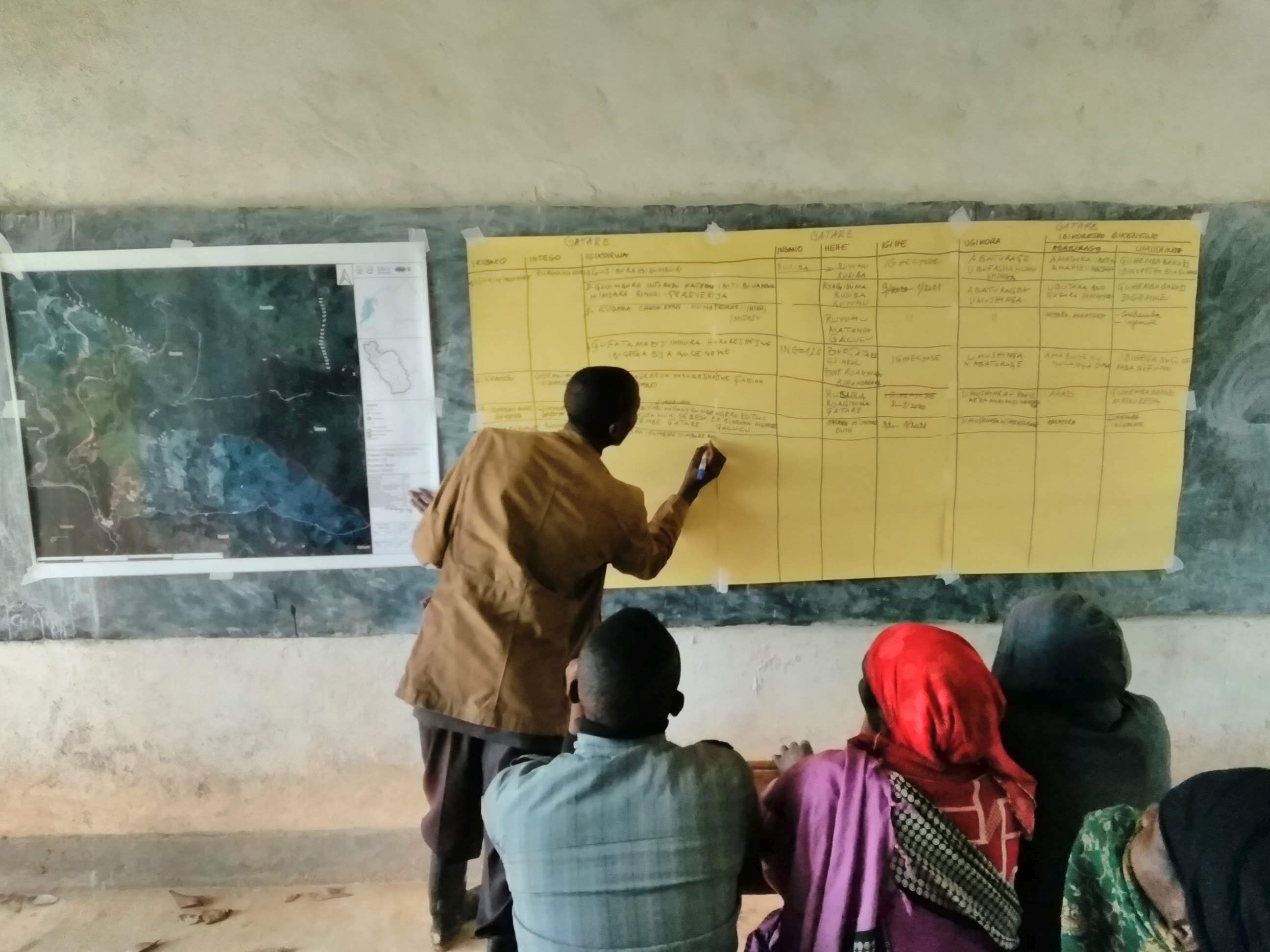 Photo: EWMR project used innovative community based approach
Photo: EWMR project used innovative community based approach
Murwanashyaka Emmanuel has been practicing agriculture as a source of his household-income. Referring to his experience, he endorses innovative measures that the project brought saying since the radical terraces were developed on his small plot his agricultural production has increased. He has since observed fields which were no longer productive now providing improved yields.
“We are fortunate that this project is helping us to develop terraces on our lands, it will help me personally to cultivate all my fields which were on steep slopes, and I will be able to produce more from them,” says Emmanuel.
“Being involved in the project, we have learnt many techniques of conserving our soil by using various conservation practices such as developing radical and progressive terraces,” says Nyirakadari Antoinette, one of the women working on the project.
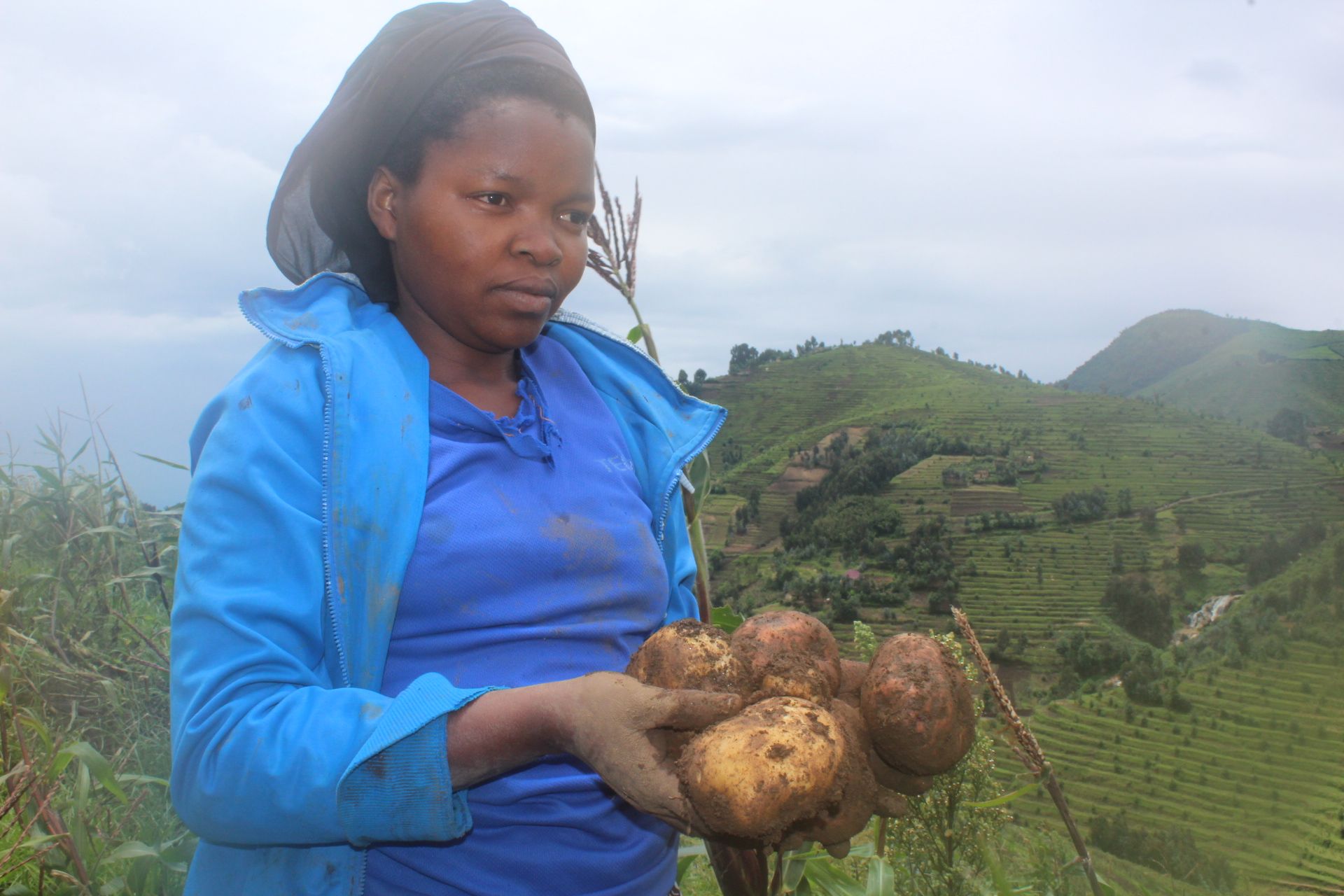 Photo: EWMR project increased irish potatoes production through climate smart agriculture
Photo: EWMR project increased irish potatoes production through climate smart agriculture
Vestine Nyirahakuzimana, is another farmer whose land was prone to erosion by the Sebeya River in Kanama sector Rubavu District, where flooding has been destroying crops and infrastructure mainly roads, bridges, schools, churches, hydropower plants, water treatment plants and even claiming lives of people during periods of heavy rain.
Today Vestine is among 10,000 small-holder farmers who are benefiting from casual labour jobs working on measures designed to mitigate flooding in Rubavu and Nyabihu districts.
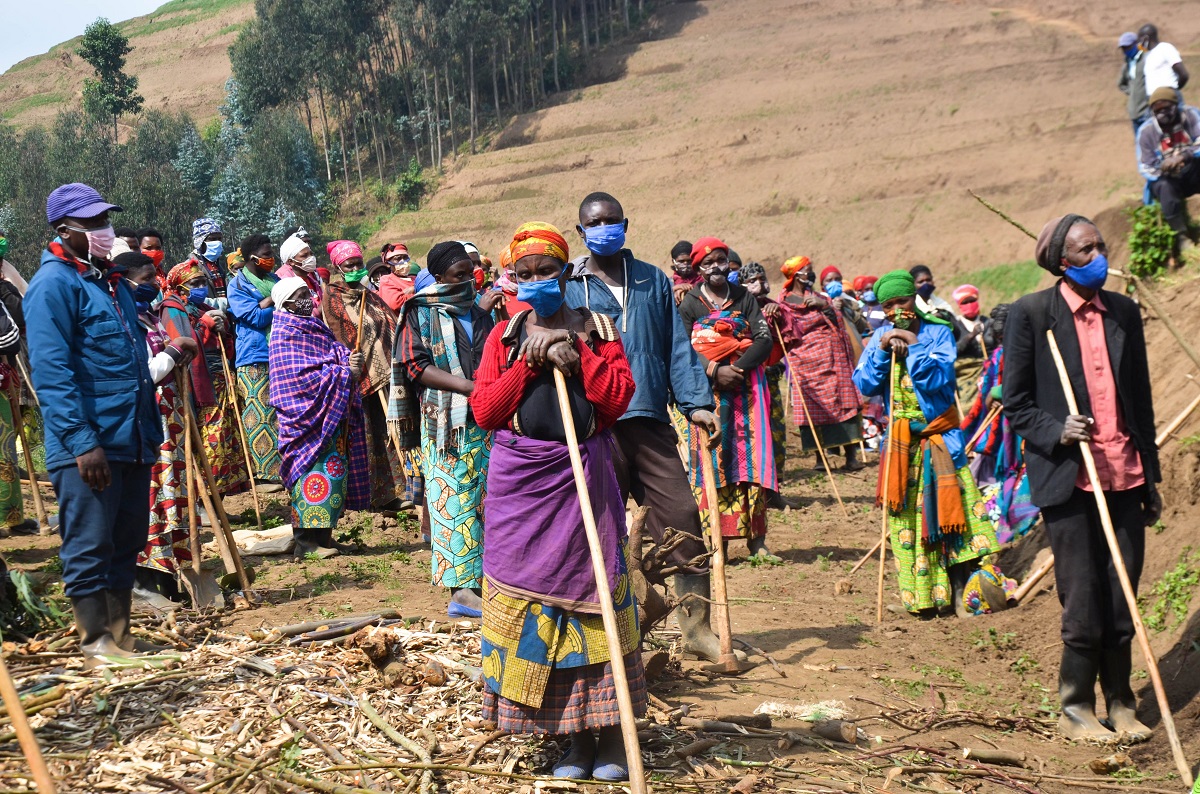 Photo: EWMR project created jobs
Photo: EWMR project created jobs
“This work is helping me to feed my family at a time when the COVID-19 has greatly affected our local economy. I am spending part of the money I earned to subscribe to community based-health insurance (Mituelle) and pension scheme known as Ejo Heza and I have even managed to buy two sheep,” she says.
Ejo Heza is intended to improve the welfare of workers in the informal sector once they retire as result of old age, debilitating diseases or accidents resulting from occupational hazards.
“Through our work building terraces, we save part of our income for Ejo Heza payments. We are paid after every 15 days and each of us saves Rwf 1500,” says Jean Paul.
Nyirakadari Colette, a 60-year-old farmer with five children in Arusha Village, Nyabihu District is thankful to the project for having provided her with rainwater harvesting tanks at no cost.
“It was challenge for us to find water in this area, and even when it rained we had to carry water from a distant source and carefully manage its use. Today we are happy that the Sebeya project has provided us with a much better option to obtain water for our household use,” says Colette.
“When farmers work to protect soil, they are restoring the health of their farmlands and this provides them with multiple benefits”, adds Colette.
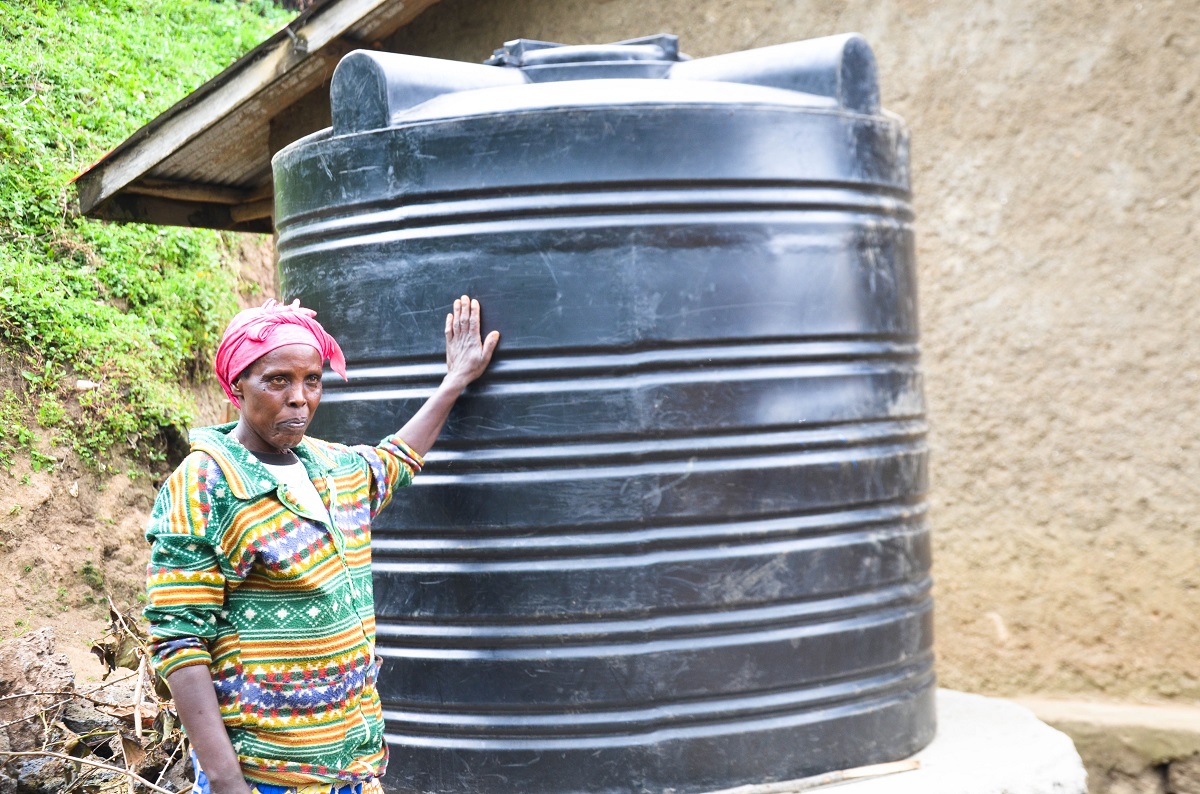 Photo: EWMR project donated rainwater harvesting tanks
Photo: EWMR project donated rainwater harvesting tanks
The same conservation measures are taking place in Rutsiro and Ngororero districts. In the upstream area of the Sebeya catchment in Ngororero, several activities are ongoing include construction of radical terraces, planting agroforestry trees, afforestation, reforestation, creating dams and digging trenches, practising climate smart agriculture, and rehabilitating small gullies.
So far, over 15,000 people with are with jobs along with site technicians, surveyors and data entry clerks. In addition to job secured, EWMR project donated cows and small livestock to small holder farmers who are in category one and two with the aim of lifting them from poverty line.
 Photo: EWMR project distrubuted livestock to local communities
Photo: EWMR project distrubuted livestock to local communities
Nzabandora Theoneste, one of the residents who received the cows through the project, says the cow will contribute to the wellbeing of his family while at the same time receive manure to fertilise their soil which will also lead to increased productivity.
“I am one of the citizens who have been employed in the terracing project. This will help us to control soil erosion so our land will become more productive in addition to the given cows that will give us manure.” “Today I am happy to be on the list of people who receive cows. Our families will have the strength to accelerate development because we are going to break away from malnutrition.” Nzabandora said
Nzabandora added that the cow he received will help him earn money from milk production but also will help him grow kitchen gardens that he constructed at his home.
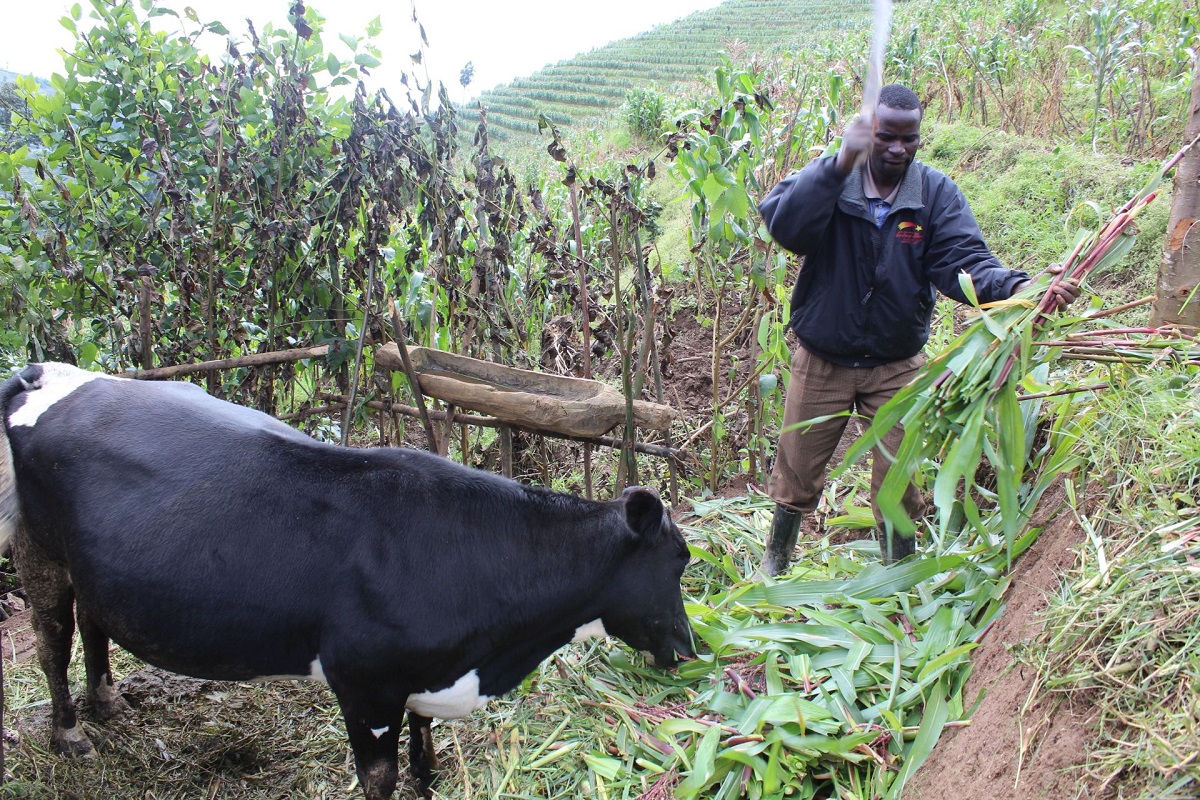 Photo: Nzabandora Theoneste, one of the beneficiaries who received cow through EWMR project
Photo: Nzabandora Theoneste, one of the beneficiaries who received cow through EWMR project
The donation of cows is part of the planned activities of the EWMR project
Charles Karangwa, IUCN's Regional Head of Land Systems / Rwanda Country Representative, commented that the Embassy of the Netherlands, through EWMR Project, is making important investments in the sustainable development and improved livelihoods of people in Western Province who depend on the Sebeya River for their livelihoods and drinking water.
“When people are lifted out of poverty, they are taught the benefits of environmental conservation and participation, which is productive both in environmental conservation and in the development of their families.”, Karangwa added.
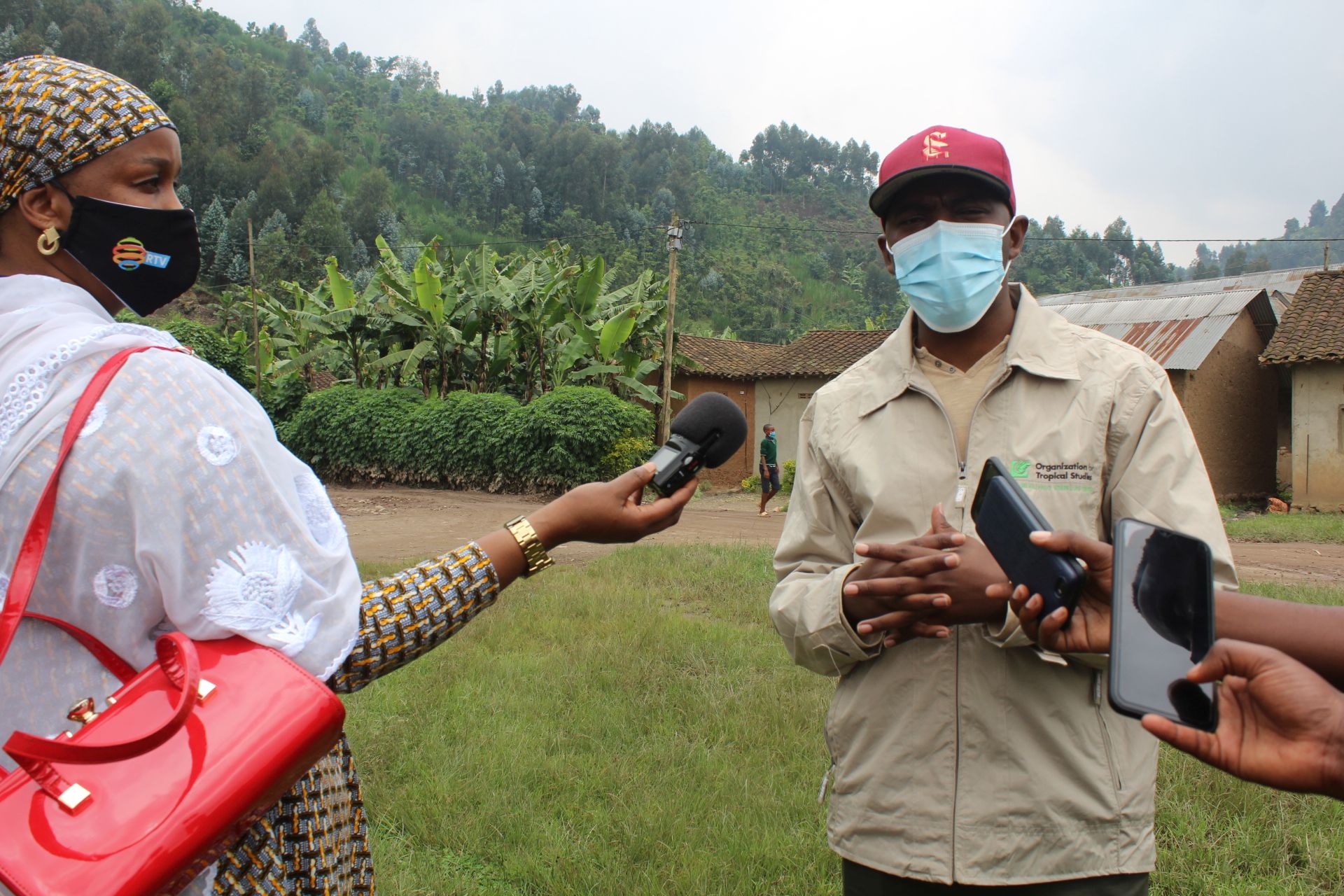 Photo: Charles Karangwa, IUCN's Regional Head of Land Systems during interview with journalists
Photo: Charles Karangwa, IUCN's Regional Head of Land Systems during interview with journalists
According to a recent assessment conducted by a joint monitoring team made up of the Technical Assistance Consortium members (RWB, IUCN, SNV, RWARRI) have started testifying fruits for the communities in the catchment.
Timmo Gaasbeek, Water Expert and First Secretary for Water and Environment at the Embassy of the Kingdom of the Netherlands in Kigali, notes that the project has started improving citizens’ livelihoods.
“The participatory village and community ownership approach has fast-tracked the project implementation. The achievements have played a pivotal role in transforming citizens’ lives. There is hope to achieve more ahead,” notes Timmo.
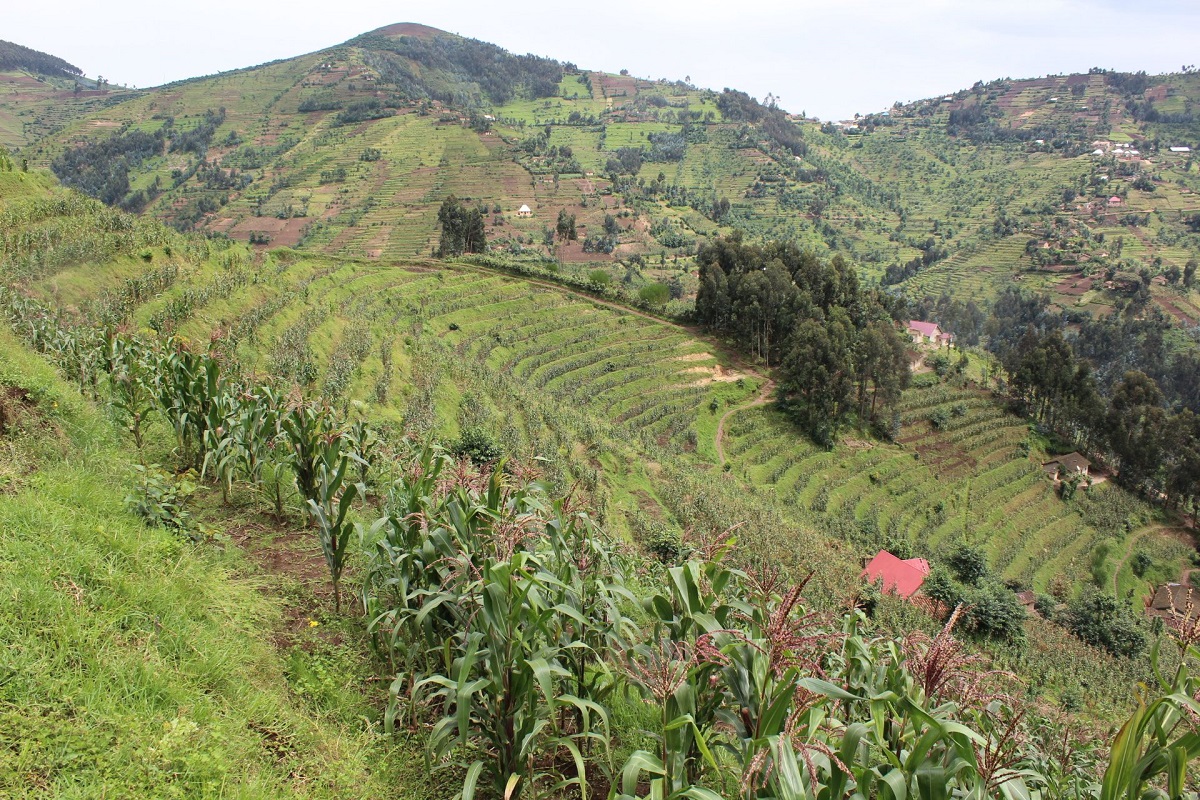 Photo: EWMR project restored degraded lands
Photo: EWMR project restored degraded lands
Prime Ngabonziza, the Director General of Rwanda Water Resources Board, explains that the mult-billion Rwandan Franc initiative is meant to address problems such as Sebeya River flooding that negatively impact local residents.
“There is an enormous need to end woes caused by the river through various activities implemented under this project such as afforestation, dams’ creation, trenches’ digging, promotion of agroforestry, climate smart agriculture, small gullies rehabilitation, radical terraces, distribution of water tanks for rainwater harvesting, energy saving cook stoves among others,” he explains.
Prime adds that all activities are being implemented in the interest of protecting Sebeya and other catchments where a large percentage of the project cost are invested to improve the beneficiaries’ welfare and increase their agriculture production.
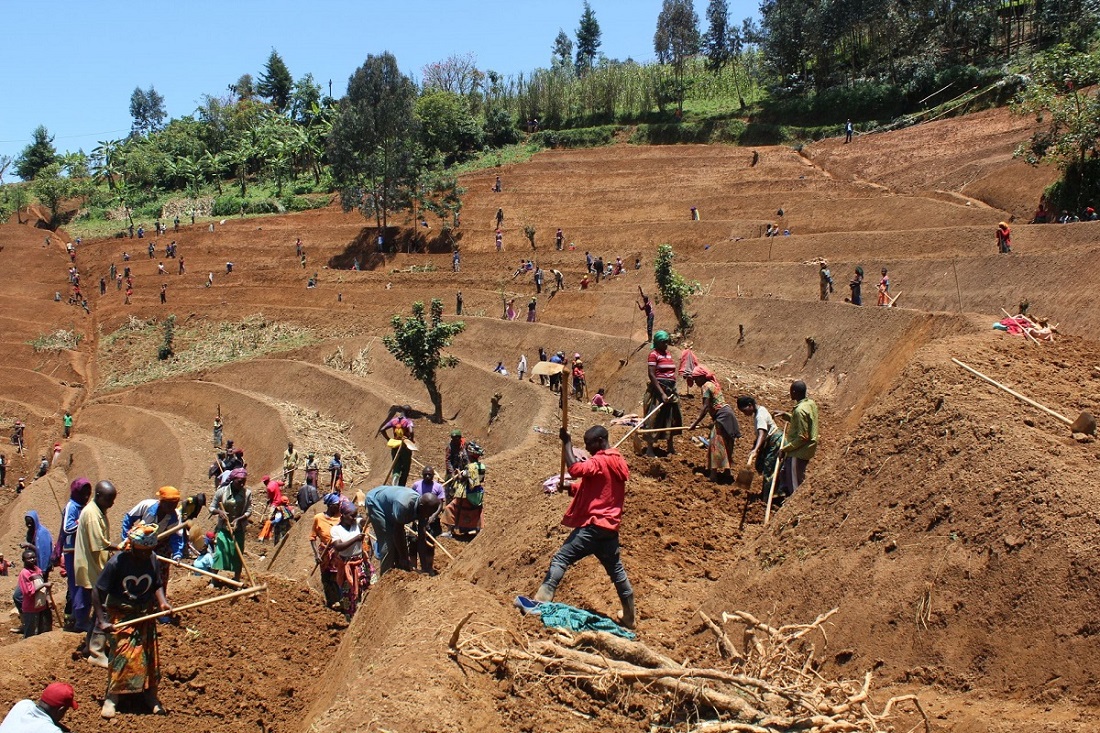 Photo: EWMR project used innovative community based approach.
Photo: EWMR project used innovative community based approach.
Disclaimer
Opinions expressed in posts featured on any Crossroads or other blogs and in related comments are those of the authors and do not necessarily reflect the opinions of IUCN or a consensus of its Member organisations.
IUCN moderates comments and reserves the right to remove posts that are deemed inappropriate, commercial in nature or unrelated to blog posts.


